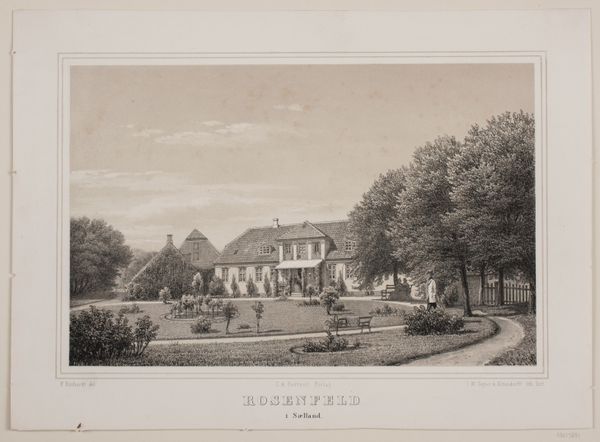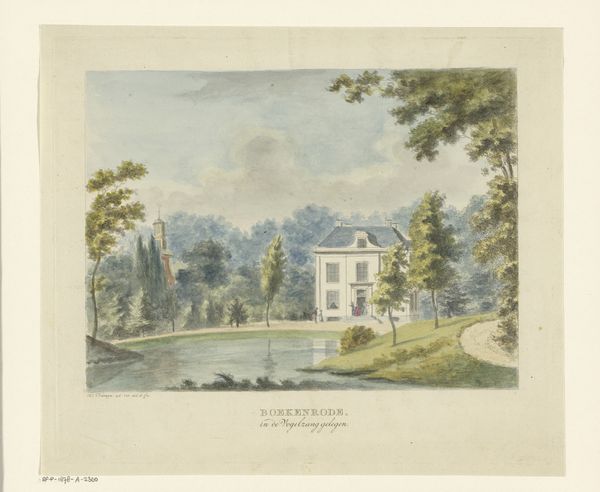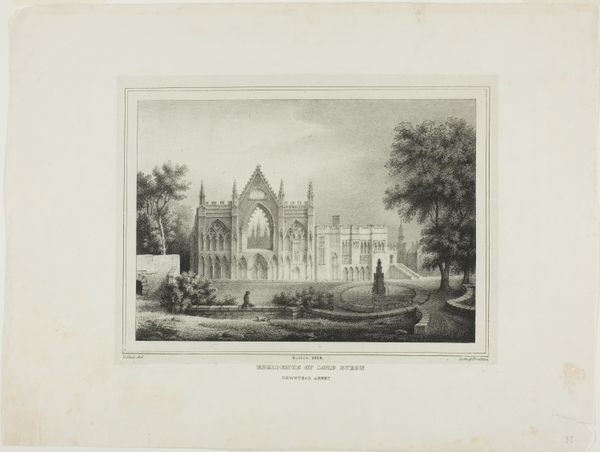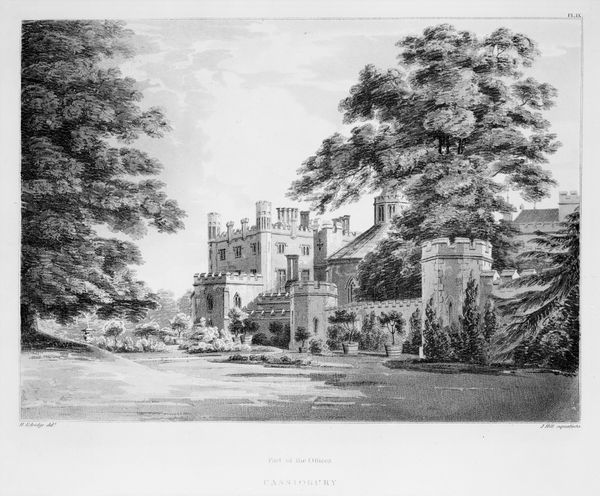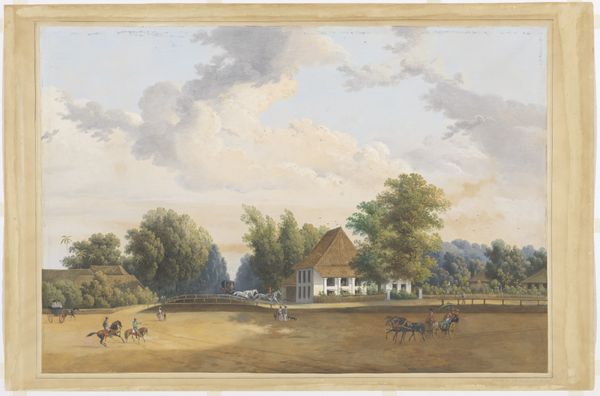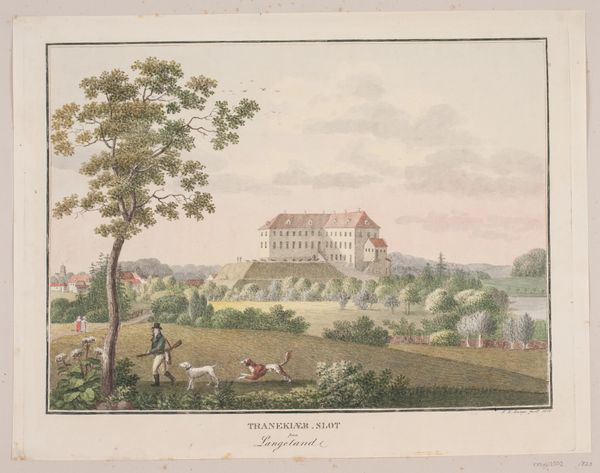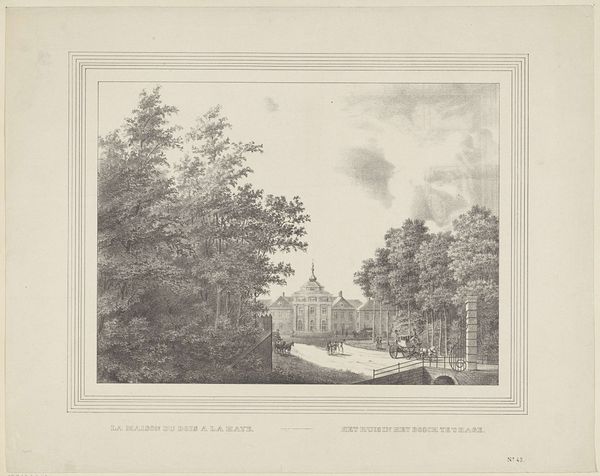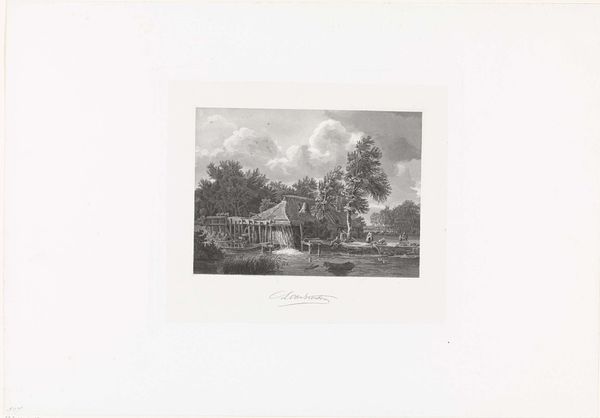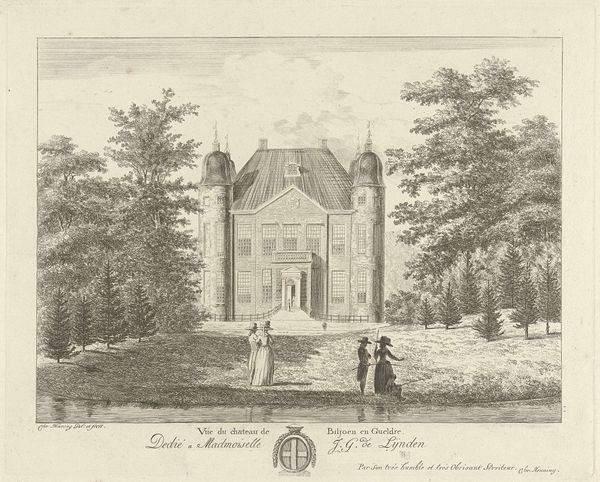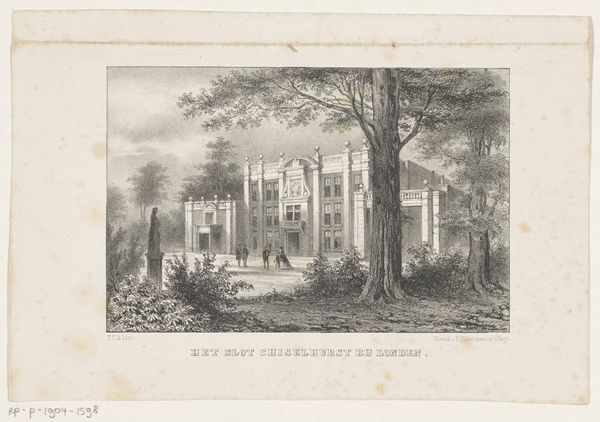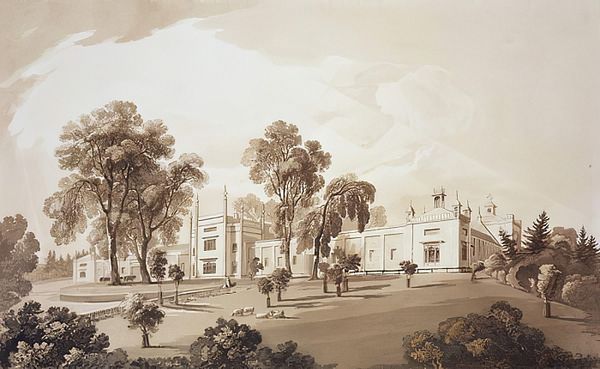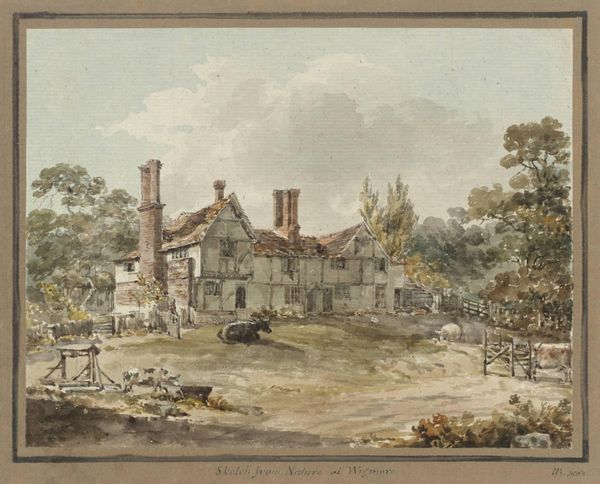
Copyright: Public domain
Curator: Currier and Ives' "Sunnyside," dating back to 1860, offers a fascinating glimpse into 19th-century American landscape art through the lens of watercolor. Editor: Wow, it has such a fairytale quality. I feel like any moment a princess will peek out of one of those ivy-covered windows. There's an almost dreamy peacefulness to it, doesn't it strike you that way? Curator: Indeed. Observe how the composition meticulously arranges natural and architectural elements, establishing a carefully calibrated interplay between form and space. Note the subtle gradation in the atmospheric perspective. Editor: It makes you wanna kick off your shoes and just wander down that path, doesn't it? Even the way the light filters through those trees on the left feels...inviting, like it is saying: "come sit with me here for a while." Curator: It’s a study in contrasting textures and lines. We have the organic fluidity of the foliage juxtaposed with the geometric precision of the manor. Semiotically, this tension reflects humanity’s complex negotiation with nature, attempting control and harmony simultaneously. Editor: True! Although I love how the whole thing isn’t too precise; the artist kind of blurs the lines… giving everything a softened, idealized edge. It almost shields you from reality… if only for a brief, artistic moment. Curator: That effect stems, in part, from the choice of watercolor—its transparency and blending capabilities serve to unify the disparate components into a cohesive visual narrative. Editor: Yeah! This one whispers… not shouts. Thanks for spotlighting it for us, I am glad we got to wander into its world for a bit. Curator: The interplay of structural rigor and emotive representation offers a fertile space for further interpretations and sustained art historical discourse.
Comments
No comments
Be the first to comment and join the conversation on the ultimate creative platform.
